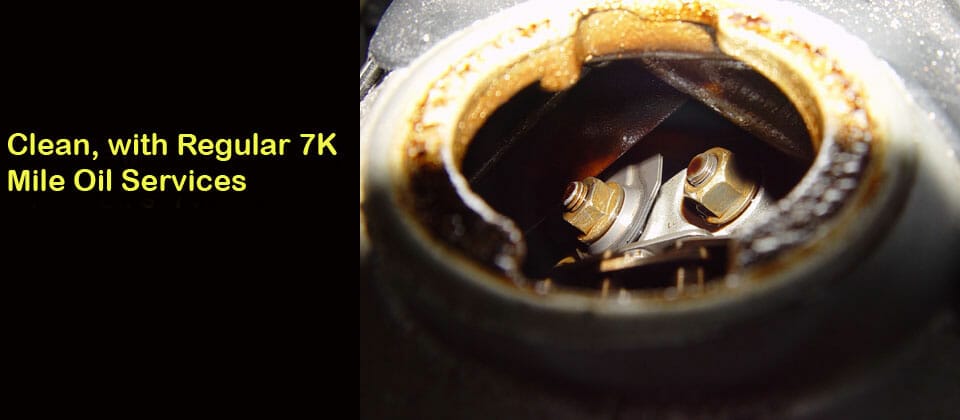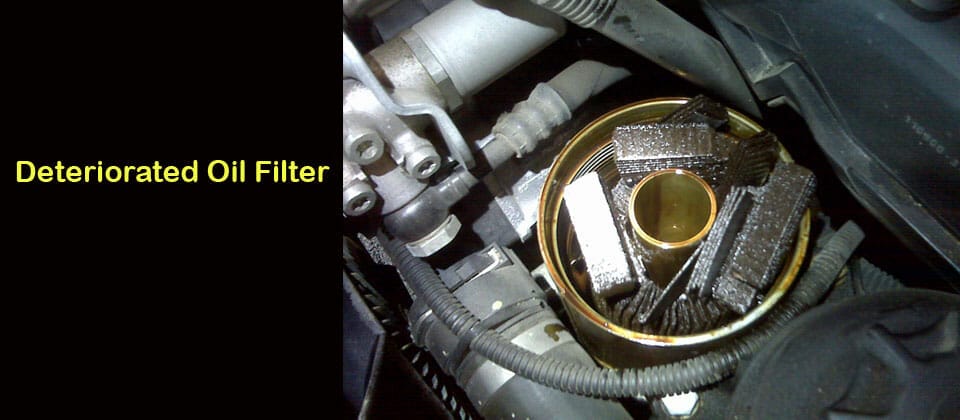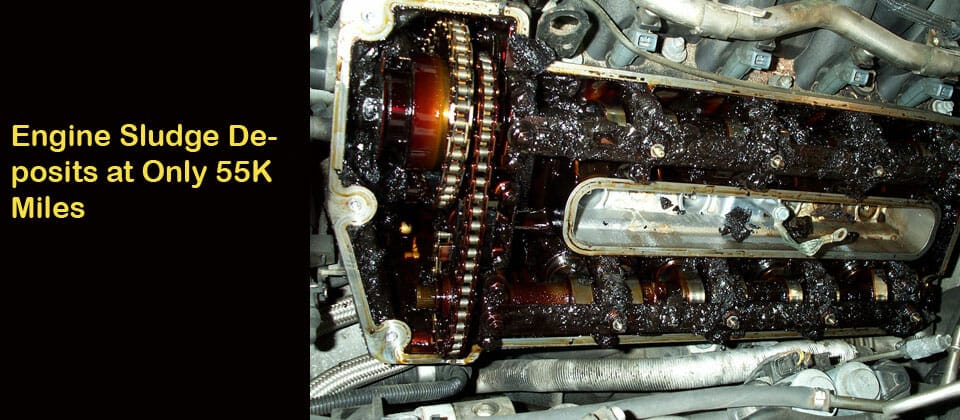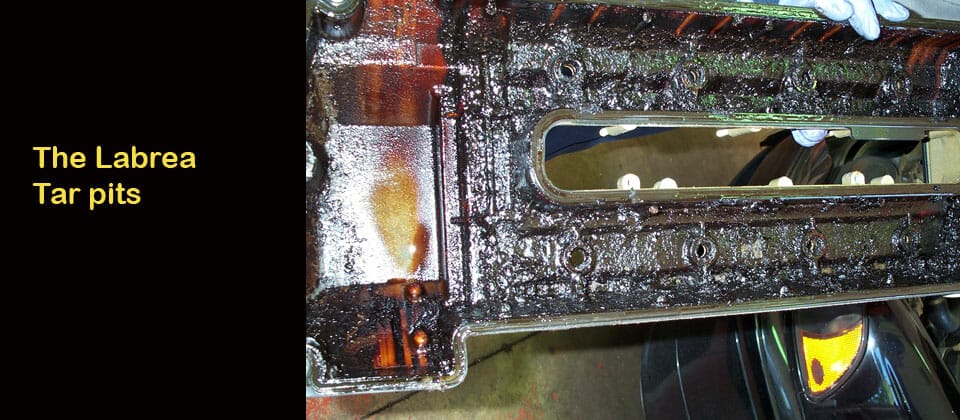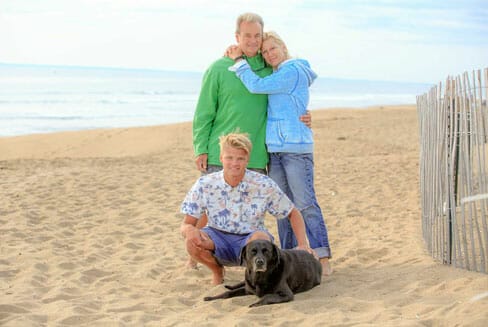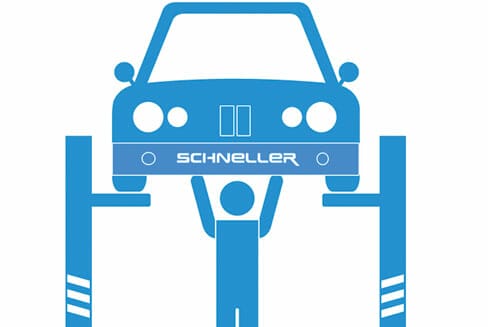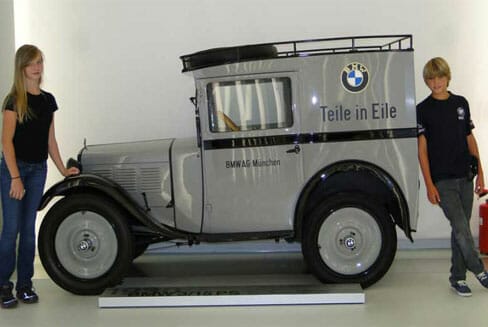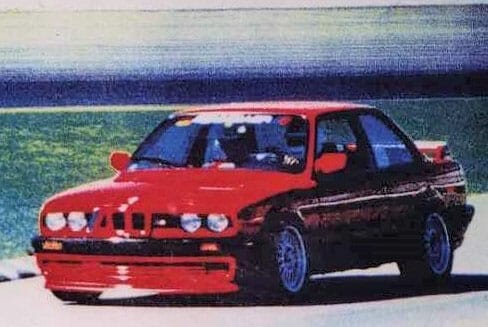A Word about Extended Factory Oil Services… Yikes!
All name brand oils produced today are quality products compared to that which was available years ago. Synthetic oils were borne out of our national defense program where vehicles needed to operate under extreme conditions with infrequent service. After all, Tanks and Hummers needed to start and run reliably in both the Arctic, as well as in the Sahara. Hence synthetics were developed to offer better cold start and hot weather running protection relative to conventional motor oils. Synthetic oil service intervals could also be extended, as the oils were more stable and resisted breaking down. Newer BMWs use synthetic oils while older pre-1993 cars use non synthetic lubricants. If necessary, your BMW will run on either oil. The two oils can also to be mixed, if, in a pinch, you need to top one off with the other.
At Schneller, we follow BMWs recommendations when selecting oil for your car. If BMW specifies a synthetic oil for your vehicle, then that is what we‘ll use. We'll also recommend synthetic oil if your vehicle experiences extreme use, for example racing, or if your BMW is equipped with an exotic BMW Motorsport engine.
The 15,000+ Mile Oil Change
In our opinion, changing your oil every 2500-3000 miles is a WASTE of money & resources. The Quick Lube Industry however, has done a great job MARKETING everyone into believing that it is mechanically necessary. They are after all sponsored by the Oil Industry, and in the business of selling oil.
We recommend oil services based on a number of factors:
• Driving Style • Synthetic vs. Conventional Oil • Time of Year • Visual Condition of your Engine’s Oil.In addition to lubricating the moving parts within your engine, oil also serves to hold in suspension water, dirt & metal shavings that are too small for the filter to capture. Like a glass of milk, there's a certain amount of "chocolate" (in the case of engine oil, contaminants) that you can add before a saturation point is reached & the "chocolate", or in the case of engine oil, contaminants, begin to settle out. These sediments form a thick tar like sludge that will clog oil passages and crankcase ventilations systems; and are generally not good for your engine. Water vapor accumulation (water is a byproduct of combustion) is also detrimental to the engine as water is a poor lubricant, promotes rust & will freeze up crank case ventilation systems in cold weather resulting in engine failures.
What do we think of the 15,000 – 20,000+ mile Factory Recommended Oil Service?
We simply believe that the service interval is too long...
First, if a car is only driven 5000 miles a year, that means that no one will have examined that vehicle in 3 years. That's just too long for a complicated machine to travel without some looking after. Imagine not having a physical or going to the dentist for 3 years because your life has been somewhat inactive!
Secondly, long service intervals "suggest" that you only need to add gas and drive. One customer drove his car for an entire year and at 15,000 miles finally came in for an oil service. The engine was ticking loudly and contained only one of the seven quarts of oil that the engine required. Where did all the oil go? As engines are run, they will consume (burn) some oil. Because of the extended oil service, he never even thought to check his oil level. Regardless of oil type and oil service interval, engines do consume oil & the level needs to be periodically checked.
Thirdly, long oil service intervals promote internal sludge & water build up. We've already replaced a number of engines that were on this extended oil service program. The first (a 2001 X5) had traveled only 22,000 miles when the crankcase breather system froze in cold weather causing catastrophic engine failure. The second (a 2000 330i) consumed much of its oil as the crankcase breather was clogged with sludge forcing the oil back into the intake where it was consumed by the engine. Ultimately the car ran out of oil and required an engine replacement.
Mini timing chains, tensioners and guide rails are particularly sensitive to oil quality and low oil conditions. When the timing system fails it will cause extensive internal engine damage on a Mini. As with the BMWs, when the crankcase ventilation system clogs it will increase oil consumption and cause the car to run low on oil. We've been able to avert disaster on a large number of other BMWs and Minis by stepping up the oil service interval to 7000 miles and replacing clogged crankcase ventilation systems.
So what does Schneller recommend as an appropriate oil service interval?
Based on our experience, here are some general guidelines:
• Synthetic Oil, once every 7000 miles or Every 6 months • Conventional Oil, once every 4500 miles or Every 4 MonthsA consistent engine oil service schedule will keep engine oil clean and free of crankcase water build up. Moreover, it provides the opportunity for one of our Technicians to spot a potential problem elsewhere on your car before it happens.
The Importance of Visually Inspecting Your Oil
If you're not sure when to change your oil, remove your dip stick (if your car has one!) & run the tip across your finger. If you can still see your finger through the oil, then it's not saturated with dirt & probably still OK. If it looks muddy, it probably is, and needs to be changed. This visual method works well in warmer climates where engines warm up quicker and they're able to burn off trapped water vapor.
If you live in a colder climate, drive your car less than 10,000 miles a year, or if you only drive for short distances (less than 20 minutes after each start) then you're in danger of water build up in your crankcase and you should change your oil based on a time schedule, rather than a mileage schedule. This is particularly important in the late fall and through the winter months when trapped water vapor can freeze inside your engine. Unfortunately, the simple technique of examining your oil may become a thing of the past as BMW has eliminated oil dipsticks from many of their newer engines and replaced them with electronic oil level senders. To get a sense of what the oil looks like, one can still however, retrieve some oil from the underside of the oil filler cap located on the engine’s valve cover.

Our
Service Area
Schneller has tuned and tweaked cars from as far away as Canada, California, Washington State, Texas, The U.S. Virgin Islands and St. Martin. However most of our customers are from New England, traveling from southern New Hampshire, the Massachusetts North Shore, and the communities of:
Boston, Newburyport, Newbury, Salisbury, Amesbury, West Newbury, Byfield, Plum Island, Rowley, Boxford, Hamilton, South Hamilton, Essex,Ipswich, Gloucester Georgetown, Beverly, Andover, North Andover, Groveland, Hampton, NH, Hampton Falls, Rye, NH, Portsmouth NH


